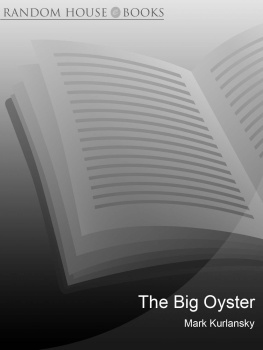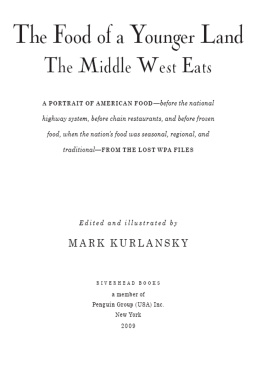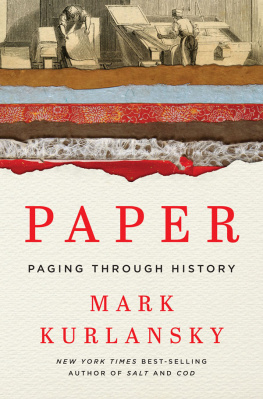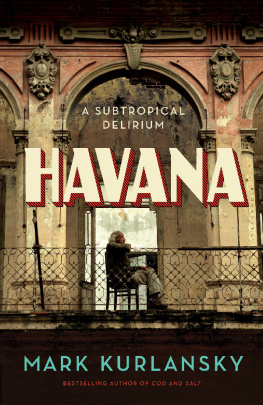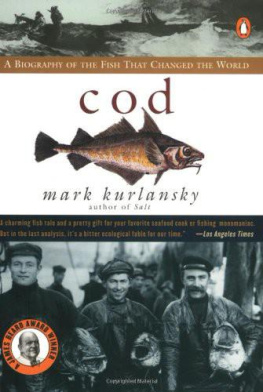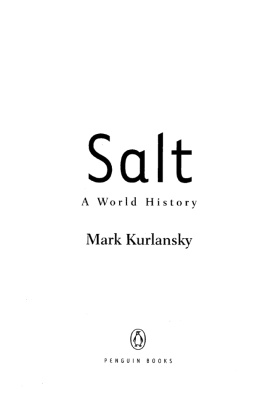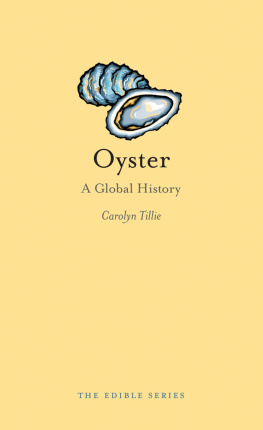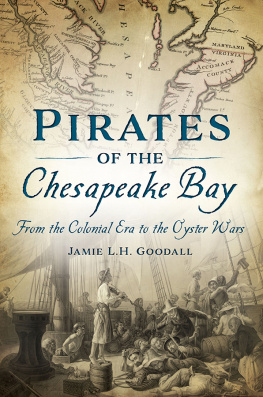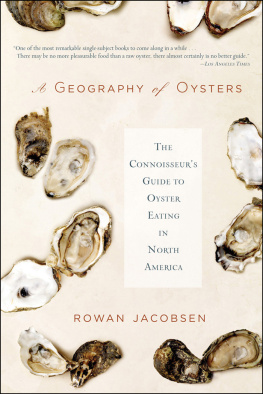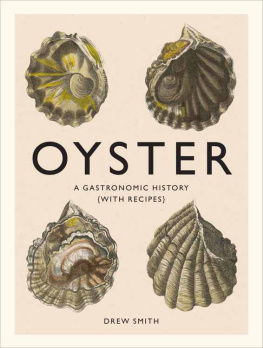ABOUT THE AUTHOR
Mark Kurlansky is the bestselling author of Cod: A Biography of the Fish that Changed the World (winner of the Glenfiddich Best Food Book Award), The Basque History of the World, Salt: A World History, 1968: The Year that Rocked the World, a short story collection The White Man in the Tree and most recently a novel, Boogaloo on 2nd Avenue (all published by Jonathan Cape and Vintage). He lives in New York City with his wife and daughter.
ALSO BY MARK KURLANSKY
1968: The Year that Rocked the World
Salt: A World History
The Basque History of the World
Cod: A Biography of the Fish that Changed the World
A Chosen Few: The Resurrection of European Jewry
A Continent of Islands: Searching for the Caribbean Destiny
Choice Cuts: A Savoury Selection of Food
Writing from Around the World and Throughout History (anthology)
Boogaloo on 2nd Avenue: A Novel of Pastry, Guilt and Music (fiction)
The White Man in the Tree and Other Stories (fiction)
The Cods Tale (for children)
The Girl who Swam to Euskadi (for children)
THE BIG OYSTERA Molluscular Historyof New YorkMark KurlanskyVINTAGE BOOKSLondon
This ebook is sold subject to the condition that it shall not, by way of trade or otherwise, be lent, resold, hired out or otherwise circulated without the publishers prior consent in any form (including any digital form) other than this in which it is published and without a similar condition including this condition being imposed on the subsequent purchaser.
Epub ISBN: 9781409077930
Version 1.0
www.randomhouse.co.uk
Published by Vintage 2007
2 4 6 8 10 9 7 5 3 1
Copyright Mark Kurlansky, 2006
Mark Kurlansky has asserted his right under the Copyright, Designs and Patents Act, 1988 to be identified as the author of this work
Frontispiece: Harpers Weekly, 1882
First published in the United States of America
as The Big Oyster: New York on the Half Shell by
Ballantine books, Random House, Inc., New York 2005
First published in Great Britain in 2006 by Jonathan Cape
Vintage Random House, 20 Vauxhall Bridge Road, London SW1V 2SA
www.vintage-books.co.uk
Addresses for companies within The Random House Group Limited can be found at: www.randomhouse.co.uk/offices.htm
The Random House Group Limited Reg. No. 954009
A CIP catalogue record for this book is available from the British Library
ISBN 9780099477594
To Alvin and Barbara Mass,
two great New Yorkers
Others will see the shipping of Manhattan north and west,
and the heights of Brooklyn to the south and east.
Others will see the island large and small;
Fifty years hence, others will see them as they cross,
the sun half an hour high,
A hundred years hence, or ever so many hundred years hence, others will see them,
Will enjoy the sunset, the pouring-in of the flood-tide,
the falling-back to the sea of the ebb-tide.
WALT WHITMAN ,
Crossing Brooklyn Ferry, 1856
CONTENTS
PREFACE
The Hard Shell of the City
To me New York is the most wonderful and most beautiful city in the world. All life is in it.
CHILDE HASSAM ,
American Impressionist painter, 1889
T o anyone who is familiar with New Yorkers, it should not be surprising to learn that they were once famous for eating their food live. The fact that oysters are about the only food eaten alive is part of what makes them a unique gastronomic experiencethat and the sense that no other food brings us closer to the sea. Oysters spend their livesa dozen years if we left them alone, but only three or four because we dontsucking in seawater, extracting nutrients, and pumping it out again. There used to be enough oysters in New York Harbor to process all the water there, which is one of the reasons environmentalists want them back. And perhaps this is also why oysters taste like eating the sea.
New Yorkers seldom think of it this way, but they live in the estuary of the Hudson River, an expansive interconnected tidal system that also involves New Jersey and Connecticut. Damage anywhere in this system deteriorates the entire estuary.
Recently, while riding a train from Washington, D.C., to New York, I found myself along the part of New York Harbors shoreline that some people unkindly call the chemical coast. Many New Yorkers forget that this is part of their harbor because it is out of town in New Jersey. Usually when Im returning to New York, at this point I would look homeward to Manhattan at the never-disappointing skyline of the island where I live. Otherwise I would look out at smokestacks and pipes and flames from refineries. But for some reason, this one time, I looked instead right in front of me and realized that I was in a grassy wetlanda magnificent grassy wetland where egrets and herons could live. As the grass rolled in waves and the sun reflected on narrow waterways, I saw that this could have been a northern Everglades. By what act of blind insanity did people decide to build chemical plants, oil refineries, and heavy industry in a beautiful wetland that belonged to one of the worlds great waterways? Blind madness? It occurred to me that they had probably never really looked at it either.
The only thing New Yorkers ignore more than nature is history. They have a habit of not spending a great deal of time pondering the history of their city. That is because of a sense that it has always been more or less the same, or, as Edmund Wilson, one of the more venerated New Yorker writers of that magazines heyday, explained his waning enthusiasm for reading history in his old age, I know more or less the kind of things that happen.
The history of New York oysters is a history of New York itselfits wealth, its strength, its excitement, its greed, its thoughtlessness, its destructiveness, its blindness andas any New Yorker will tell youits filth. This is the history of the trashing of New York, the killing of its great estuary.
New York is a city that does not plan; it creates situations and then deals with them. Most of its history is one of greedily grabbing beautiful things, destroying them, being outraged about the conditions, tearing them down, then building something else even further from natures intention in their place. What could be more typical of New York than the Doorknob, a spot in New York Harbor that is contaminated from being used as a dumping ground for the trash created when the city tried to correct decades of neglect on the Lower East Side by tearing down the tenements to build housing projects.
One of the great New York paradoxes is that the metropolis is both unique and typical. Many of its stories are true for other cities as well. The oyster history of New York often matches that of other great oyster capitals such as Paris, and London on the oyster-encrusted estuary of the Thames. It is interesting that London, rich in its own oysters like New York, also destroyed them, whereas Paris, which was the commercial and consuming capital of oysters brought in from other regions, did more to preserve its beds.

